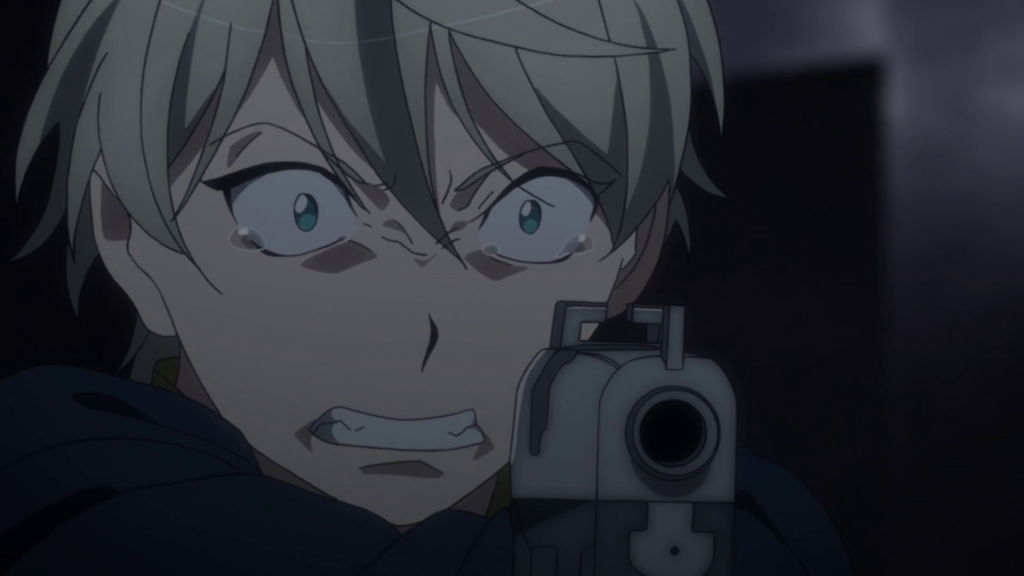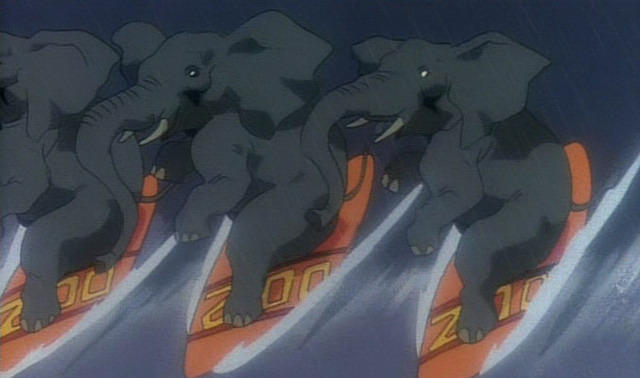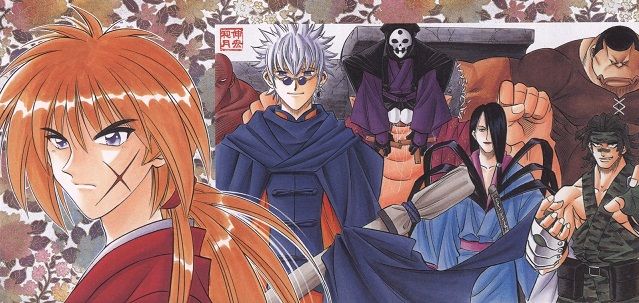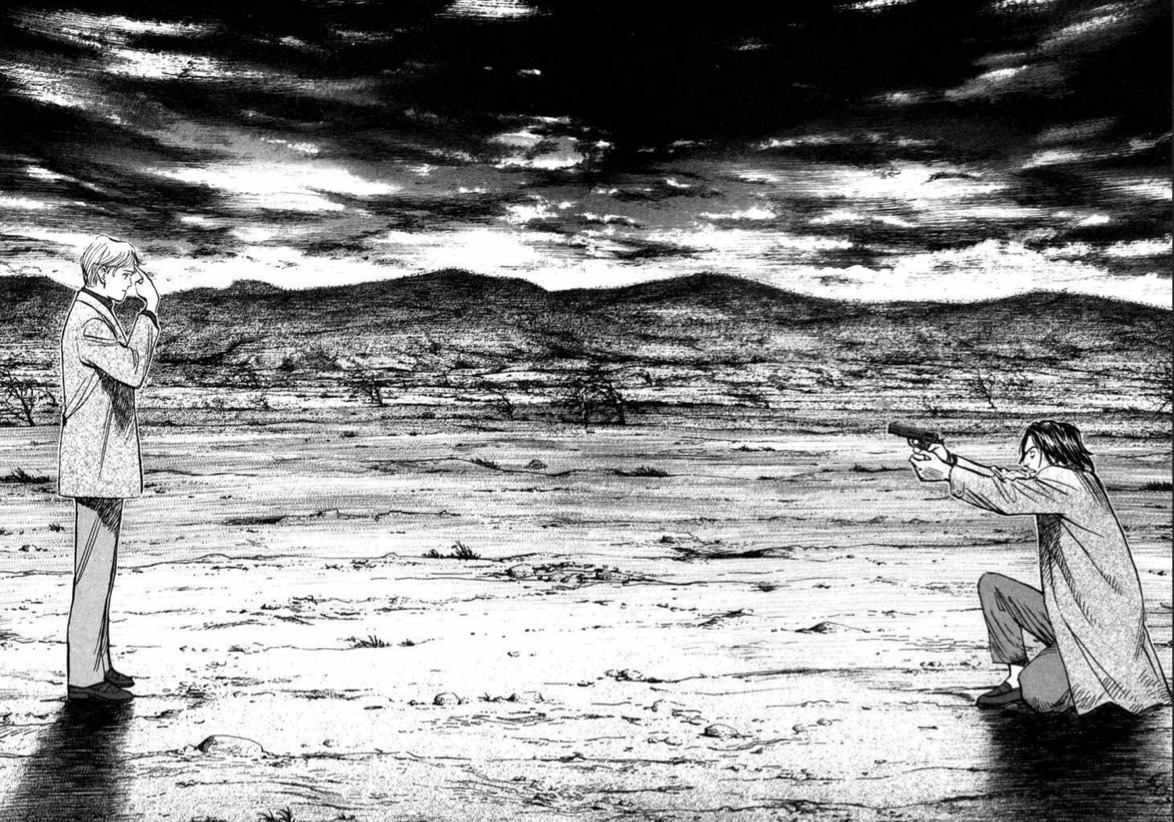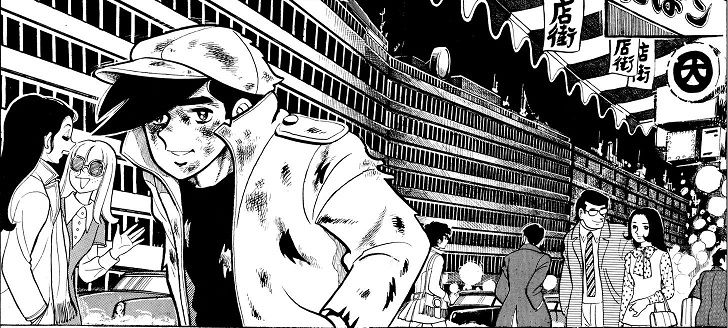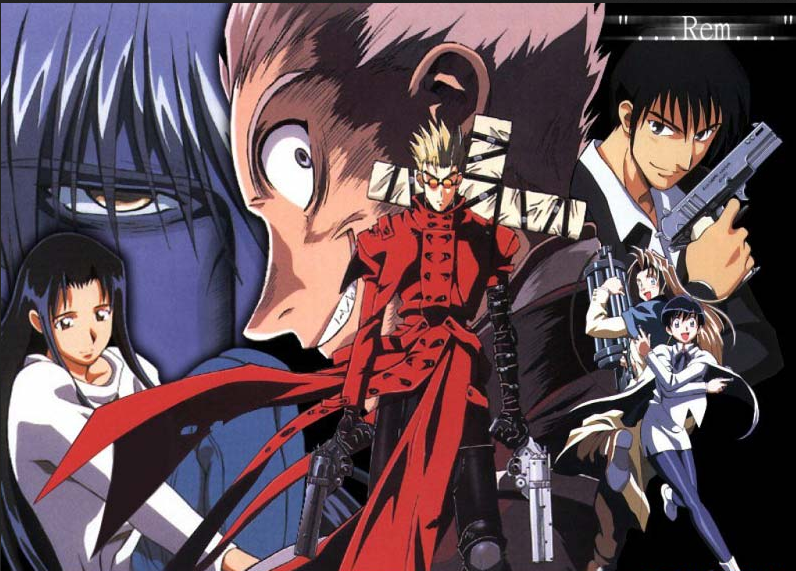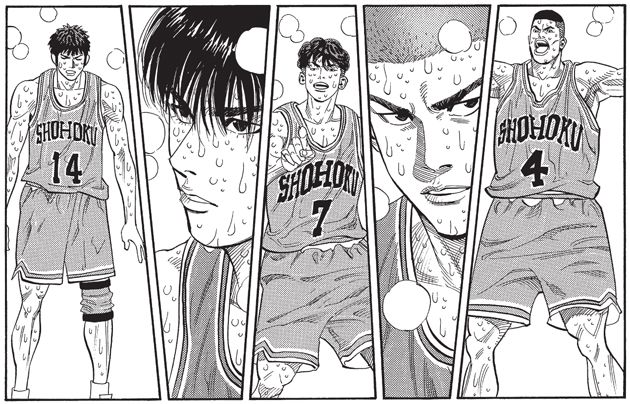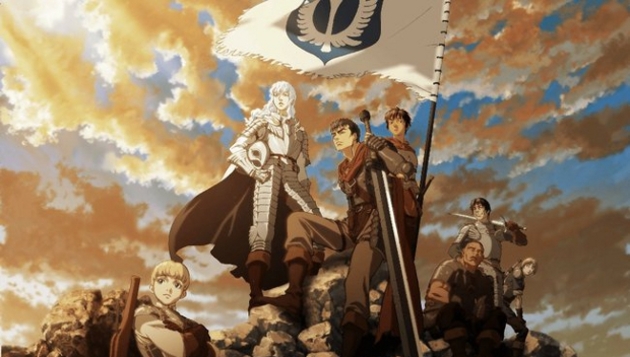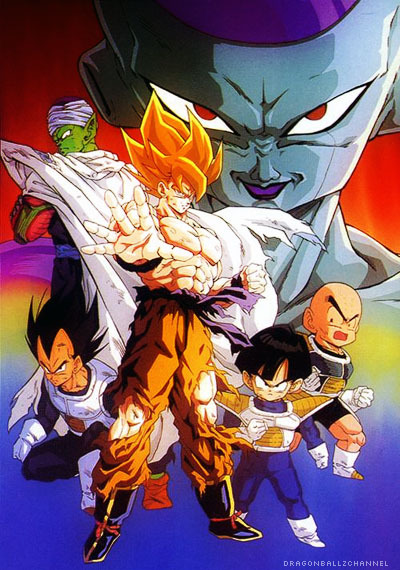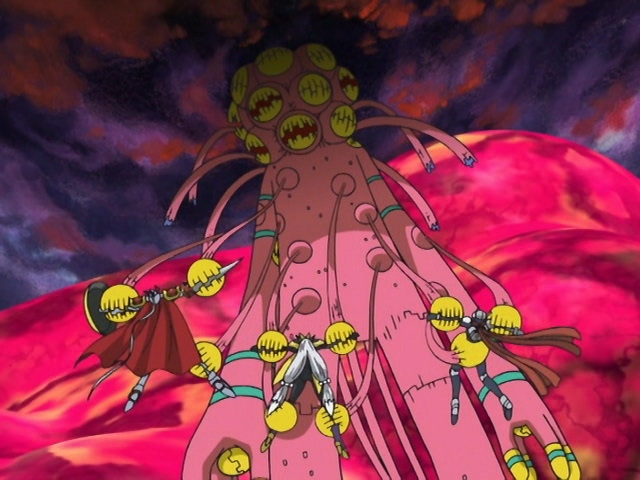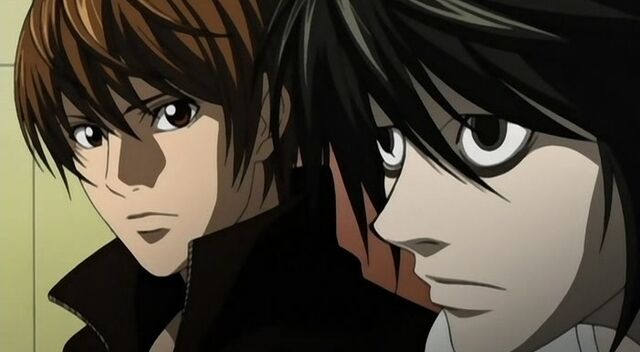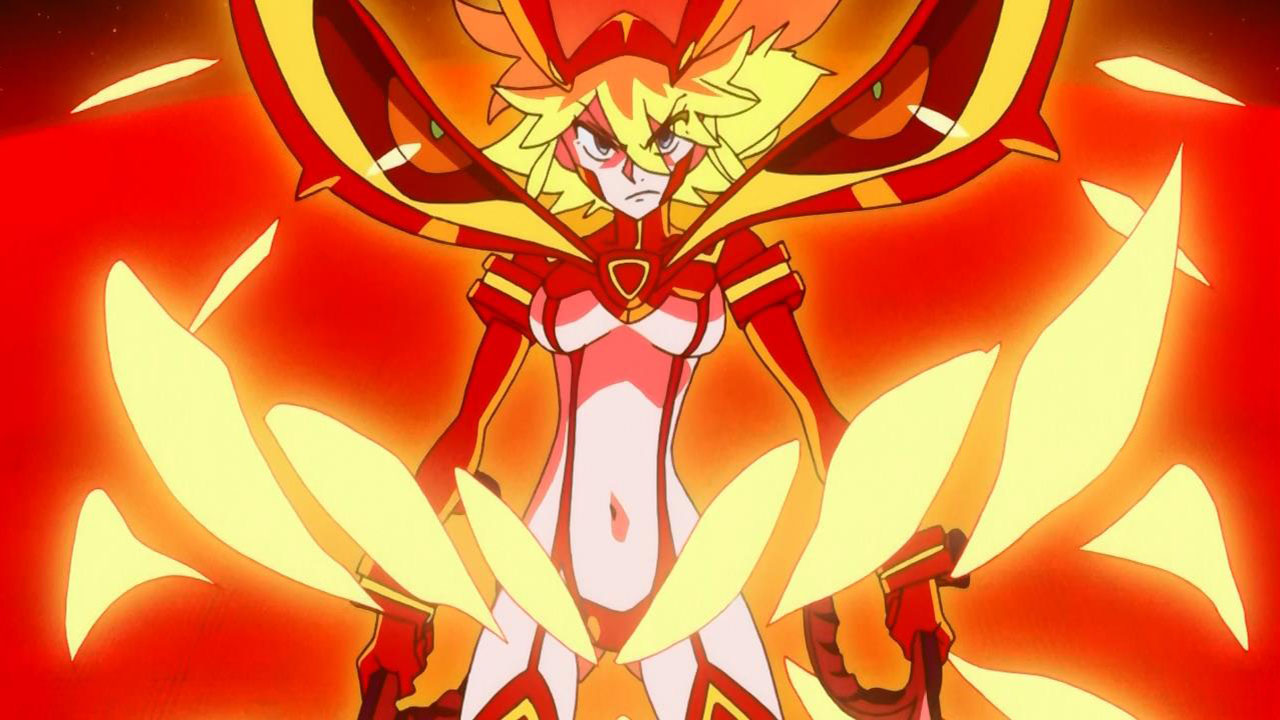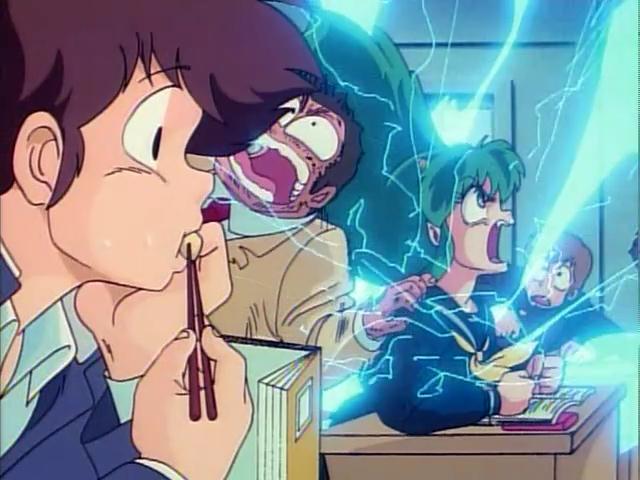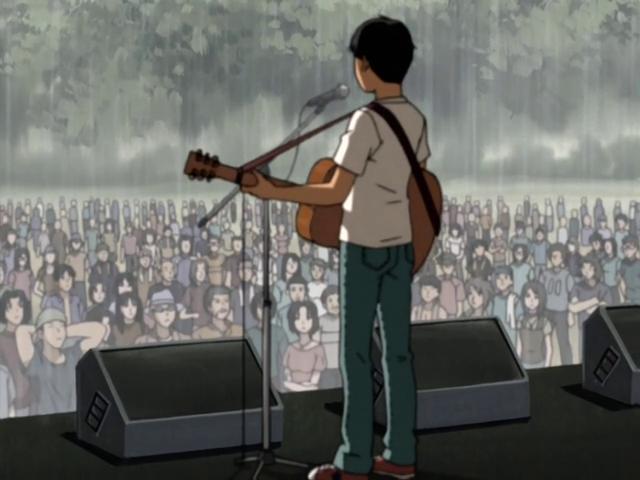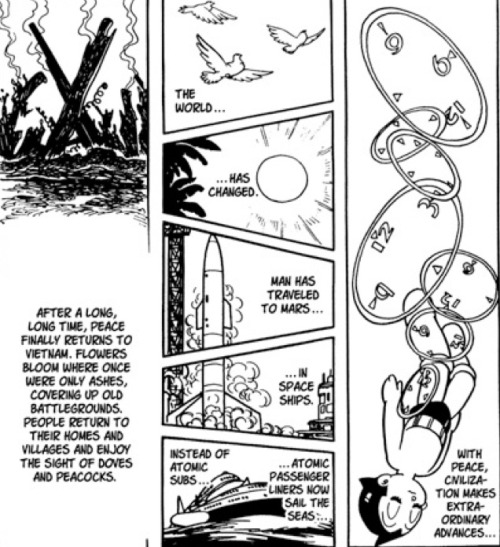#15. Munich (Monster)

Creator: Naoki Uraswa
Original Years of Publication: 1997-1998
Manga: Chapters #47-77
Anime: (Monster) Episodes #25-39
Studio: Madhouse
Japanese Publisher: Shogakukan (Big Comic Original)
North American Publisher: Viz Media
North American Distributor: Viz Media
Recommended Version: Manga
There’s a doctor named Kenzo Tenma on the road searching for a man named Johan. A man as sick and twisted as he is good at hiding his evil intentions, Johan quickly rises through the criminal underworld with nothing but charisma and smarts to aid him. Meanwhile, our hero finds himself at odds on how he should stop the killer he is responsible for making. You see, Dr. Tenma is the reason Johan is still alive and wonders at what his responsibility is toward the killer. Should he sink to the level of evil he is facing, or is there another way? And what of the innocents Johan wraps around his fingers in the process? How can you save someone who has no idea they have a knife hanging over their head when you can’t bring attention to the blade itself? When the story of Monster rolls into Munich, we finally begin to understand exactly who Johan is, and what he plans to do with the world.
Monster is the breakout hit from famed mangaka, Naoki Urasawa, the work that came out of nowhere to surprise everyone with its depth of characterization, twisting storyline, and meditations on good and evil. There is not a point of this series that isn’t top notch and among the best of the anime/manga cream of the crop, but this arc is the one that really begins to show Urasawa’s chops.
Johan, the story’s antagonist, is essentially the central character of this arc despite not being the point of view we see the story from. Most of the plots and events center on his involvement, and it is up to the main characters to figure out how it all links together and how he figures into them. The tongue of a snake, Johan has let himself into the prestigious University of Munich in order to fulfill some scheme involving a man named Hans Georg Schuwald. At the same time, a boy in the university commits suicide, and a private detective finds a link to that death which goes back to earlier murders in the story. We are eventually introduced to Dr. Reichwein, a concerned doctor whose patient ends up dead under strange circumstances and he resolves to find out why. Meanwhile, Dr. Tenma follows Johan around with the psycho in his sights . . . but just can’t pull the trigger. Or can he? This all leads to a tremendous showdown to foil an assassination attempt at the library of the University of Munich when all these plots intertwine and it is up to Tenma to make the final call of what he is meant to do. How do you really stop a monster?
Monster is a labyrinth of plot turns and character reveals, so describing it here will not do it justice, but it is the start of something even bigger which is come. Eventually the story will feature a man with a literal monster living inside him, a bodyguard with a heart of gold, and a final showdown that will leave you with your jaw on the floor. It continues getting better every chapter (or episode) and it all really hits the groove in Munich. ~Spark of Spirit
#14. CP9 (One Piece)

Creator: Eiichiro Oda
Original Years of Publication: 2004-2007
Manga: Volumes #32-46, Chapters #303-441
Anime: Episodes: #207-325
Studio: Toei Animation
Japanese Publisher: Shueisha (Weekly Shonen Jump)
North American Publisher: Viz Media
North American Distributor: FUNimation
Streaming: Adult Swim Video, Crunchyroll, FUNimation, Hulu, Neon Alley
Recommended Version: Manga
Water Seven:
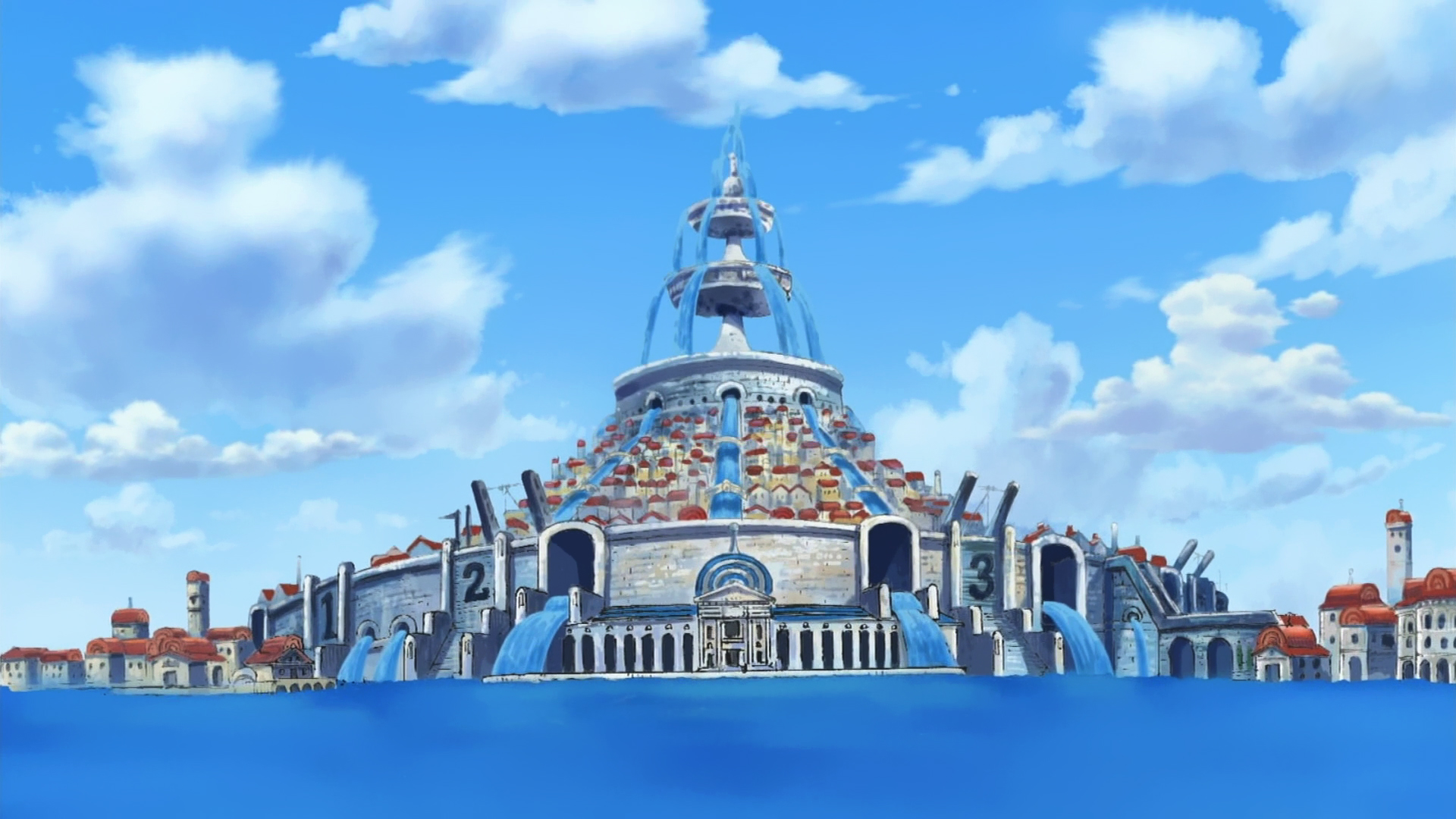
It’s no secret that battle-shonen series are obligated to increase the stakes of their conflicts with each successive arc. What this mostly amounts to is that the heroes are presented with an even stronger enemy than the last, have to go through a few trials or training to get stronger to beat them, and then engage in an endless string of battles where the supporting cast takes on the minor villains in several one on one fights until the main character takes down the big bad. There is nothing necessarily wrong with this formula, but the problem is that several series stick to just inflating the threat but not truly challenging the characters and their situation in a new way. This makes things a rather boring affair after a while, since the series is just going through the motions of what a large chunk of other battle shonen since Dragon Ball have done; endless, meaningless fighting with some half-assed emotional aspect thrown in hastily at the last second. A good battle shonen arc should not simply increase the power of the villains and heroes, but rather, develop the story to new heights, develop it’s world, and evolve the characters and give them something personal and challenging to go through.
The CP9 arc of One Piece does just that. We’ve seen the Straw Hat Pirates fight against an evil syndicate trying to take over a kingdom and a maniacal god that only central protagonist Luffy could defeat in previous arcs, so at the start it’s hard to imagine what could truly challenge our heroes in a way that hasn’t been depicted before. The arc chooses what one might expect to be the natural enemy of the pirate crew, the World Government, the strongest organization in the OP world, and presents your standard antagonist group in the form of the CP9, enemies Luffy and co. are overmatched by in their first confrontation and must get stronger to defeat, though thankfully we are spared any training sub-arc. But if introducing a new, stronger gang of villains was all this arc did it wouldn’t have been nearly as successful as it is. In the first section of this arc, dubbed “Water 7,” the Straw Hats’ initial intentions are to rebuild their beaten-down ship, the Going Merry. But in an eventful encounter with a chilling adversary they are given a cryptic warning not to trust one of their own, Nico Robin. After which, arriving at the Venice-inspired city, Water 7, they learn that their precious ship is beyond repair. Worse, one of their own is robbed by a gang of crooks and Nico Robin suddenly disappears. From there on the arc presents a mystery and a series of twists and turns that ultimately end in some shocking revelations and developments that build upon previously established plot-threads in former arcs, and set the stage for the showdown with the arc’s titular organization.
Water 7 provides a foundation that distinguishes the arc from previous ones: an inner turmoil within our group of protagonists combined with a political mystery and strong sense of crisis, all before we ever learn who the villains are. The Straw Hats as a group are tested as tensions run high, they lose a precious symbol of their identity in their ship, and they question the motives of a seemingly turned traitor. The character Ussop is given a personal arc built upon self-doubts and actions developed up to this point in previous arcs, finally erupting in a violent falling-out with his captain over the fate of the ship, leading to what is possibly the most emotionally-charged fight of the series, and his sudden and heart-breaking defection from the crew. The Straw Hats as a group or as individuals had never been challenged by such strong internal struggles before this, and the arc places them into a state of vulnerability that we’ve never seen before and rarely seen since. The mysteries involving the political conspiracy in Water 7 tie into the Straw Hats’ personal plight as they go deeper into it, questions answered in uncovering a decades-old conflict far greater in reach and severity than they or the reader could have possibly imagined, tying together what at first appeared to be unrelated plot points into a single, engaging story arc that manages to give our heroes their single greatest challenge yet, building the anticipation and the stakes of this arc to levels that no doubt surprises every first-time reader, leaving a profound, lasting impact. Instead of coasting on the established battle-shonen formula, One Piece instead introduces several elements going into this arc that build on top of each other to heighten the experience, providing weight to what transpires, making every page, and every critical moment in this arc, a rewarding and refreshing reading experience, and one that elevates the series to whole new level in it’s storytelling. ~Cartoon X
Enies Lobby:

Whereas Water Seven was intriguing and presented us with an interesting history regarding key characters that related to some of the biggest events in the world of One Piece, it was still merely just the set-up half of the CP9 arc. As things went to shit by the end of that act, it’s in Enies Lobby where all hell breaks loose for the Straw Hats and the World Government. Luffy and crew are determined to rescue one of their own, who was taken captive in W7, and brought to the titular Enies Lobby, one of the three great World Government strongholds. This one happens to be the execution platform for some of the world’s most dangerous and notorious criminals. It is here that we learn about Nico Robin’s past, and why she is one of the most wanted criminals by the World Government, which has much more to do with her history than the fact that she’s a member of the Straw Hat pirates. As Luffy and his crew race against the clock, they must deal with the World Government’s elite force, Cipher-Pol 9, in the process, and considering how badly they got their asses handed to them by CP9 in the W7 arc, it’s already not looking good for the team.
On a base level, Enies Lobby does everything that a good shounen story-arc should. It has an engaging story to keep viewers focused, it has plenty of great and creative fights for each character, it contains many of the series’ most iconic scenes, and is presented in a grand scale that feels bigger than any previous arcs to come before it. However, plenty of great arcs can boast that, yet what sets EL apart from the rest is what else it accomplishes besides that. For one thing, it manages to brilliantly enrich the history and mythos of this world, and for once is a shounen arc where the flash-backs are genuinely intriguing in unraveling a humongous mystery that ties in with the main plot, rather than feeling like a disruption. The emotional stakes are high as well, pushing characters to go beyond their physical and mental limits to overcome the great obstacles that lie in their way. Probably the most important of all, though, is that it expands the scope and possibilities of the series for all future arcs.
Before this arc, the Straw Hats had been just a relatively low-level band of thugs that weren’t a priority of the World Government on their list of most wanted “criminals.” This arc has them directly clashing with the world’s most powerful organization, so regardless of the outcome, you know that they are on their radar big-time, now, and it will change the circumstances of the characters and their world status forever, which is incredibly exciting. Add in the fact that this arc even brings back many playoffs from story elements and characters that were foreshadowed and alluded to in previous arcs (something that almost no other shounen manga really does), and you have an arc that is so central and pivotal to its own series that it just made itself destined to be one of the greatest ever put to page. Combining thrill and intrigue of the W7 arc with the action and intensity of the EL arc, the CP9 arc is one the greatest story arcs in anime, manga, or any medium. ~Dr. Ensatsu-ken
#13. Stone Ocean (JoJo’s Bizarre Adventure)
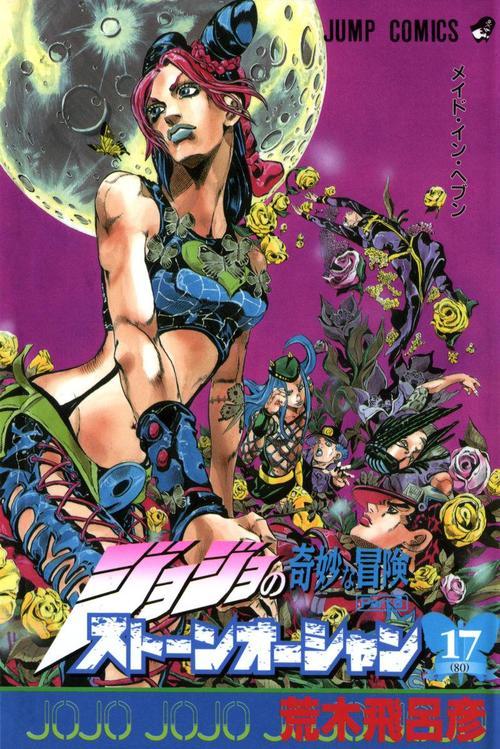
Creator: Hirohiko Araki
Original Years of Publication: 1999-2003
Manga: Volumes #64-80, Chapters #595-752
Japanese Publisher: Shueisha (Weekly Shonen Jump)
Okay, so I have to confess something; I haven’t finished Steel Ball Run yet. Yes, yes, I know that many JoJo’s fans regard it very highly, but I just didn’t get the time before we started making this list to read more than a fourth of it. So I have no idea if it’s actually the best arc or if it’ll be my overall favorite part of the series. But, I have read all of the shonen arcs of JoJo’s, which means I’ve still read 6/7ths of the manga so far, and I’m a huge fan. And, when it came down to deciding on an arc from it to put in this list, I had a hard choice on my hands, because all the arcs after the first are very strong in their own rights. But, in the end, I knew that if I was to choose one part to represent the best of everything JJBA has to offer, it just had to be the sixth, Stone Ocean.
Stone Ocean is rather underrated compared to most other installments of the JoJo’s series. Internationally, Stardust Crusaders is the face of the franchise, while Battle Tendency has grown in popularity thanks to the 2012 anime adaption. Diamond is Unbreakable has long been the secret favorite among fans, while Steel Ball Run is easily the most critically acclaimed. Yet, don’t let the fact that it is overlooked by many fool you into thinking it has any less to offer. On the contrary, Stone Ocean is the best written part of the series, or at least the best of the shonen arcs. It features the most tightly-focused narrative, with excellent characters and character development, some of the best Stand fights in the entire series, and provides finality to the conflict that had pervaded the story since it’s inception.
Conceptually, it’s also pretty interesting, especially for how much it strays from the typical JoJo’s formula. Whereas parts 2,3, and 5 followed the basic battle-shonen adventure formula, the majority of part 6 takes place in Green Dolphin Street prison, following the struggle of new inmate Jolyne Kujo, who was framed for a crime she didn’t commit, as part of a larger conspiracy. Whitesnake, a mysterious Stand user with the power to take away people’s memories and Stand abilities and store them as CD discs, deigns to avenge his fallen comrade, none other than the long-time enemy of the Joestar bloodline, Dio Brando. Using Jolyne’s imprisonment to lure her father, Jotaro Kujo, to Green Dolphin Street prison, Whitesnake successfully steals Jotaro’s memories, which contains the secret needed to fulfill Dio’s life-long ambition. Without his memories and his Stand, Jotaro is left in a near-death state. In order to save his life, Jolyne must gather allies and figure out the true identity of Whitesnake, determine the secret of what was written in Dio’s long-lost diary, and recover the discs that hold her father’s memories and Stand before Whitesnake achieves his twisted objectives.
What follows is a prison break story mixed with a mystery story that eventually becomes an apocalyptic epic. Jolyne and friends maneuver around the prison trying to gain intel on Whitesnake and the location of the discs, put in multiple life-or-death situations as Whitesnake bestows Stand powers to several violent inmates to eliminate the gang and retain his anonymity. Whereas previous installments of the series followed a more Stand-of-the-week format, where the heroes fought against several enemies in string of different battles, most of the villains in part 6 do not actively pursue the heroes or seek to fight them, and the encounters come about due to Whitesnake manipulating situations to put the heroes in danger, and as hazards of their efforts to uncover his secrets. Instead of being fight-driven, it’s much more story-driven, akin to the second part, Battle Tendency, rather than the third part, Stardust Crusaders. Everything that happens in the story is consequential to the plot, with no extraneous encounters or developments, something that parts 3 through 5 were guilty of to some extent. Things move quickly in the story, as secrets, twists, and plot development come at a rapid pace. Though most parts of JoJo’s are addicting because of the strategy-driven and battle-of-wits nature of the series’ iconic Stand encounters, part 6 is the first to be equally addicting because of it’s intriguing, multi-layered plot. This is also easily the most, well, bizarre part of JoJo’s to date, featuring abilities ranging from an artificial personality whose body is made up of plankton, to a Stand that brings cartoon characters to life (sadly, Araki denies us any crossovers, but at least Kenshiro and Raoh did apparently destroy Tokyo off-screen), to a stand that uses the sun’s rays to literally transform people into snails. Araki goes all out on each and every battle and encounter in this arc, which keeps the excitement and entertainment high throughout, and helps make Stone Ocean perhaps the most balanced story arc in the entire series.
What’s more, the characters are fantastic. Jolyne has the best character arc of all the titular JoJo’s thus far, starting off a whiny, naive, and weak-willed brat but maturing into a capable, strong-willed, no-nonsense heroine with all the best traits of those before her. She has Johnathan’s passion for justice, Joseph’s sense of humor and wit, Jotaro’s coolness and badass moments (her signature sigh of exasperation, “Yare Yare Dawa,” is also similar to her father’s “Yare Yare Daze”), Josuke’s lovable punk attitude, and Giorno’s adept skill to use his power creatively to adapt to any circumstance. She is the only female JoJo’s to date, and a rare main female protagonist in battle-shonen series. Other characters, from Ermes Costello, who is presented as a smarter, cooler version of part 3’s Jean-Pierre Polnareff, to Weather Report, an enigmatic man with a mysterious, tragic past, are all excellently developed and used in the story, and overall comprise the strongest group of protagonists in the series, or at the very least second to that of Diamond is Unbreakable’s.
It’s also rather fitting that Jolyne encompasses the best of her predecessors, because the core story of part 6 is about the legacy of JoJo’s Bizarre Adventure up until this point. Dio Brando has shaped the plot of every story arc in the series thus far, his influence far reaching, and inescapable for the descendants of the Joestar bloodline to avoid. Whitesnake seeks to make the last testament of Dio’s legacy a reality, and as a consequence, he must erase the threat of the Joestar bloodline once and for all, drawing them into one final conflict, this time, the fate of reality itself at stake. What’s most fascinating about this is what Whitensake’s objectives are and the philosophy behind them. Haunted by a tragic event that occurred due to a mistake of his own as a kid that he couldn’t foresee, Whitesnake cursed the fact he couldn’t see his fate. Thus, he sought a means to show people how their lives will play out ahead of time, so that life may proceed following along a strict, pre-destined narrative. He essentially wants all people and life to follow a routine, or rather, a formula. For a series as wild, unpredictable, and bizarre as JoJo’s, that idea of normalcy is counter to the very essence of the series. Reality itself, the Joestar bloodline, and the chaotic element that characterizes the world of JoJo’s is all put at stake in this arc, and the result literally and permanently changes JoJo’s as we know it forever.
Steel Ball Run was not originally labeled as a part of JoJo’s when it first started in Shonen Jump. It was only when it moved to Ultra Jump that it was revealed as it’s seventh part. It’s highly possible that Stone Ocean was meant to be the final arc and culmination of the entire series. We’ll never know this for sure until Araki comments on the matter, but the arc itself makes a damn good case for it. It concludes the long-standing blood-feud between the Joestar clan and Dio Brando, presents a different take on the standard JoJo’s formula, has a main protagonist encompassing the best parts of those before her, and ends in a way that gives a real sense of finality. It encompasses the best of JoJo’s Bizarre Adventure and everything great about it, and we feel it is hence a worthy representative for the entire series, and one of the best story arcs in the medium, which is why it’s on our list. ~Cartoon X
#12. Karma (Phoenix)
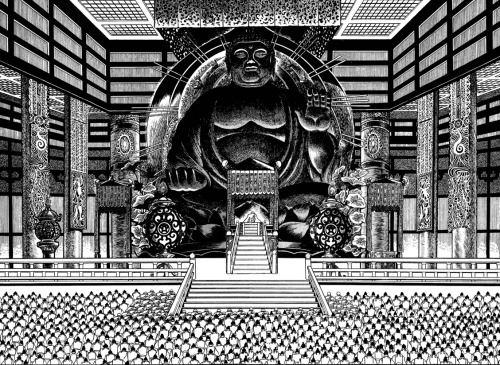
Creator: Osamu Tezuka
Original Years of Publication: 1969-1970
Manga: Volume #4
Japanese Publisher: COM
North American Publisher: Viz Media
Though Osamu Tezuka was purportedly agnostic, many of his works are nonetheless deeply spiritual. They often feature explorations of moral issues as well as existential musings on life and death. Religion and religious themes are often used in several of them as means to explore these moral and mortal concepts, such as the use of christianity in Ode to Kirihito and MW, for instance. But Tezuka seemed to have a curiously pronounced interest in buddhism, in particular. Specifically, in the ideas of karmic retribution, and reincarnation. These concepts are explored in detail in two of his works in particular; Buddha, a fictional epic detailing the birth of buddhism and the life of the Buddha himself, and Phoenix, a work meant to be his magnum opus. Phoenix is not really a single narrative, rather, it is a collection of several different stories, taking place in different time periods, connected together by the presence of the titular Phoenix in each. Tezuka used this loose format to tell several diverse tales from all sorts of genres, while exploring new ways of comic storytelling through innovative panel arrangements and breathtaking artwork. And of these stories, it is widely agreed the best is the fifth, referred to in the Viz edition as “Karma.”
It’s an apt name, for the story centers around the contrasted lives of two men whose actions income to shape their spiritual fates. The story begins tracking the birth and early life of Gao, a one-eyed, one-armed boy who was disfigured in an accident when he was only a baby, leaving his father dead, his mother mad, and himself an object of hatred and discrimination in his village, and regarded as an inhuman monster. One day, the pent-up anger dwelling in Gao breaks loose, and he goes on a murderous rampage, ultimately becoming a cruel, merciless criminal, killing and stealing whatever he can to survive. One day he crosses paths with Akanemaru, a buddhist scholar, and this fated encounter changes these two mens’ lives forever. For as both go their separate paths in life, a series of circumstances lead both to become wood carvers, masters of their craft, and enter spiritual journeys in which they come to learn of the cycle of reincarnation, and the concept of karma. But whereas one’s path in life leads to reverence, respect, and fulfillment, the other’s leads to nothing but empty riches, loneliness, and eternal regret.
“Karma” is a work of complicated morals, and unexpected fates. And it really embodies it’s namesake. Every action and every trial the two characters suffer every come back to them in some form, good deeds rewarded with good, bad deeds with bad, times of suffering with those of joy, and vice-versa. It’s a testament to the unexpected way our lives can turn out, and how things do not always go as we wish, for good or not. Yet everything has a grand purpose in the overall scheme of things. Both characters learn this when they come to learn the idea of reincarnation, where they discover their ultimate fates in later lives. For Gao, he will never escape suffering in any of his lives, but he comes to appreciate the fact he lives and the beauty of the world surrounding him, and devotes his life to helping those around him as long as he can. Akanemaru, however, does not become resigned to his fate. Staying alive becomes an idea that consumes him as he chases the Phoenix, the ultimate embodiment of eternal life, and ends up abandoning his ideals to become a vassal for a morally corrupt lord who cares nothing for religion but only status. Gao, in his suffering, comes out a better person, able to craft works of considerable skill and soul, which leave a lasting impact and help people. Akanemaru, instead, creates works carved exclusively as symbols of his retainer’s power, useless displays in the face of the suffering of the people around him, and turning a symbol of religion into a wholly political one, begetting the artistic integrity that once drove him.
The narrative explores a wide variety of moral and spiritual ideas, but the central thesis of it is basically this; devote one’s life to doing good and you will find happiness, but live selfishly and you will suffer in turn. A particularly interesting aspect of the story is Tezuka’s social and historical commentary, drawing parallels to how religion can be corrupted as a political tool, and lose sense of it’s original, meaningful purpose. What it means to be religious and the value of religion is explored in the story through some characters who embrace it’s teachings through their actions, while other characters cling to it superficially to serve their objectives. Tezuka ties this idea back into the value of life, and what one does with one’s life, and the difference shows clearly when Gao and Akanemaru cross paths again for the final time; both are masters of their craft, but only one creates works that are truly immortal. The original japanese name for this arc was “Hououhen,” in reference to the titular Phoenix, which is appropriate, considering it features the most symbolic use of the Phoenix in any of the stories. Both main characters try to understand why they live, when life seems to exist only to die. The Phoenix is a constant, representing the “is” that is life; that it will always be, always precious, forever fleeting. It is nature itself, and our relationship with it, and a cycle of life and death that will always exist until the end of time. One embraces this, the other does not, and ultimately, their choices in life are reflected in the legacy they leave behind.
“Karma” is a fascinating work. Not just for it’s deeply complex narrative, but also because of the way Tezuka tells it. In “Karma,” Tezuka shows off the skills of a master story teller, with an incredible use of panels and layouts, spectacularly rendered landscapes, gripping action scenes, and many powerfully depicted sequences featuring some of the best artwork in any of Tezuka’s works, and really, in any comic out there. It fully takes advantage of the medium to create a powerful piece of dramatic storytelling through sequential art, in a way that is solely, wholly Tezuka. “Karma” reflects Tezuka’s greatest qualities as a creator and a master of the medium, and stands as one of the greatest works he ever wrote, and possibly one of the best graphic novels ever published in general. If you were to read any part of Phoenix, or any work of Tezuka’s, let this be the one you experience. It is a fine testament to comics’ greatest potential as a medium of art and storytelling, something Tezuka strove to show throughout his life, and was surely proud to have proven. ~Cartoon X
#11. As Long As Love Lasts (Maison Ikkoku)
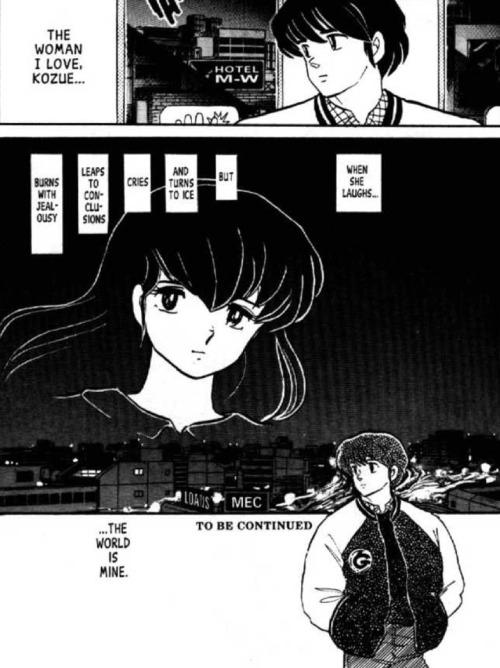
Creator: Rumiko Takahashi
Original Years of Publication: 1984-1987
Manga: Volumes #9-15, Chapters #87-161
Anime: Episodes #53-96
Studio: Studio Deen
Japanese Publisher: Shogakukan (Big Comic Spirits)
North American Publisher: Viz Media (Formerly/Out of Print)
North American Distributor: Viz Media (Formerly/Out of Print)
Recommended Version: Anime
I’ve seen many anime/manga since I became a fan, and though there are many anime/manga romance series out there, I’ve found that genuine, believable romances are few and far between. This is particularly true if the series is mostly comedic instead of dramatic, and if the will they/won’t they element of the relationship drags too much. I think what a lot of what these kind of series should be doing is not focusing so much on the characters becoming a couple, but instead showing how they develop as one. The build-up to them realizing/admitting they both love each other and getting together is fine, but it’d be more interesting to see how the characters make a relationship work and how that turns out, which most anime/manga just tend to skip. But when it comes to romance series in anime/manga, the one I think possibly everyone who sees it agrees it’s great is Maison Ikkoku. That might sound surprising, considering Rumiko Takahashi is known for her goofy humor and stalled relationships in her shonen mangas. And it’s not like it doesn’t take a while for Godai and Kyoko to finally get together in the seinin Ikkoku, either, even though the series is a couple hundred chapters shorter than any of her shonen works. In fact, they don’t really become a couple until about the end. Yet, no one ever complains about this. Why? Well, the relationship between the two, and what they go through in the series, is presented and developed in a way that makes this entirely believable. The characters recognize their feelings for each other early on, but are hesitant and wait to become a couple for understandable reasons. What’s more, the characters themselves are well-developed and characterized throughout the series, and the pay-off succeeds in making the build-up completely worth it. But perhaps Maison Ikkoku’s biggest strength as an anime/manga romance series is the fact that it is not solely about the romance.
Before I elaborate any further, I guess I should point out how exactly we’ve divided Ikkoku into an arc. Well, you guys know how the Trigun anime is like, right? This is sorta like that. Essentially, the series was comprised of shorter, more comedic story-lines for most of it’s first half, with slow but sure character and plot development, but not many too serious stories and generally moved along at a leisurely pace. But, around when Godai lands a student-teaching job and the character Yagami enters the story, the series noticeably changes. The story moves with rapid-fire new consequential plot developments, character arcs are being pushed forward much faster, and story-lines become much more inter-connected. The series starts to drop episodic comedic chapters/episodes and focuses more on more serious serial ones. While one could make the argument that you could divide up this section of the story into even more specific arcs, because all the plot-threads are so inter-connected and returned to during it’s entirety, it just makes sense to consider it as one, whole story arc. As for where the name came from, I took it from the first half of the last anime episodes’ title, “As Long As This Love Lasts! Ikkoku-kan is Forever…!!”
And hey, it’s a fitting descriptor. Love drives so many of the characters of Maison Ikkoku. It’s what makes Godai try so hard to find a good job. It’s what makes Yagami go so out of her way to help him find one. It’s what makes Mitaka determined to overcome a long-held phobia. It’s what makes Asuna overcome her shyness and actively pursue a relationship with him. And it’s what keeps Kyoko so conflicted as to whether she should move on in her life, and how long she should wait. Love encourages the characters, confuses them, breaks them down, and helps them become better people. It’s a powerful motivator, one that sees them through good times and bad.
But there’s not only romantic love at play here. There’s the filial love of Yukari Godai for her grandson, that make her help him out and push along his relationship with Kyoko, or that of a mother who seemingly abandons her children, only to return for them later as promised. There’s the love the pre-school kids have for Godai, and Godai’s love for teaching and playing with them. And let’s not forget about the residents of Ikkoku’s love for the place they live in, their one and only home. In Maison Ikkoku, love takes many forms, and comes about in many ways. It’s not always sweet, or straightforward, and it’s often frustrating, but it’s always there for you, whether you realize it or not. What you love, and who you love, are the backbones that help support you and keep you going no matter how tough things are for you in life.
That’s the thing that makes this arc special, what makes Maison Ikkoku the classic it’s regarded as. It’s not just a love story; it’s also a story about life. The arc sees Yusaku Godai struggle to find work, to finish college, and manage the relationships he has with the people around him. And it’s not easy. Few anime or manga can really be called relatable, but you’d be darned not to feel for Godai as he suffers and deals with rejection, experience the joy when he discovers the thing he loves to do, and then be just as crushed when he finds out there aren’t any jobs out there for him. It takes a lot of work, a lot of luck, and a lot of perseverance for Godai to finally achieve a steady job, and throughout the experience he sees brief glimpses of hope and disappointment from prospective interviews, job recommendations, and several side-jobs just to make ends meet. It’s one hell of an emotional roller coaster, and it’s an experience that rings true no matter who you are.
But that is just Godai. What about the other characters? Let’s start with Kyoko. She’s happy in her job as the manager of Ikkoku, and to be surrounded by many good friends who care about her. But though the years change and she grows closer to Godai and Mitaka, she still finds herself to reluctant to move on out of lingering loyalty for her first, young love. But she is also bothered about what she wants to do in life, whether she’s really happy being single, or being manager of Ikkoku, for the rest of her days. And if she were to date or marry one of her suitors, is there a guarantee she will be happy? Or, worse, will she have to forget that first love and the people associated with it, and leave those memories lost deep in her mind in order to make one work? She’s afraid of that happening, but knows if she waits too long, she might lose many people she holds close to her, and her impulsiveness and indecisiveness in matters in the story ultimately costs her many opportunities and choices. As for Mitaka, he makes tremendous strides to overcome a phobia he’s held since childhood. But once he’s overcome it, he finds he has new suitors, especially one hand-picked by his relatives personally. But can he just abandon a relationship he’s worked so hard to create without it even beginning? Can he continue to wait forever for a woman who cannot make a choice, and marry someone he doesn’t love, or is afraid to fall in love with, for equally stubborn reasons? Mitaka finds himself increasingly reluctant to continue his laid-back, bachelor life-style. He wants to settle down as quickly as possible, but is forced into a position where he must chose between love and convenience.
The characters in Maison Ikkoku experience tough challenges that anyone might face in their lives, and ask themselves tough questions that we all ask at least some point in them. Though their struggles are deeply personal, they are presented in ways that prove highly relatable. The arc tracks a specific portion of Godai’s life, where he must finally grow up and become his own man. During this time, other characters are going though their own new transitions in life, and the conflicts that arise as they adjust drive the story, affect each other, and effect the ways each of they lives turn out. But it’s not all serious, and the characters aren’t always in the worst of times. Life is not like that, after all. There is still plenty of humor, funny surprises, and intimate pleasures even in the roughest of times, and this helps make both the dramatic and the joyful events in the story stand out, and have a resounding impact. And through it all, the thing that helps the characters push forward is the love they have for one another. Nosy family members, sometimes frustrating but sometimes helpful friends, a place one is happy to call home; all of these support the characters as they walk towards new paths in life.
So, why does Masion Ikkoku succeed as a romance series? Because it understands there is more to love than just the feeling. Though few of the characters officially engage in a steady relationship until the end, they suffer through all the trials and tribulations of one during the period, knowing each other intimately by the end of the story, and maturing as people and forging stronger relationships because of their experiences. Moreover, the story tracks not just the development of these relationships, but how these characters change through a 8-year period of their lives, and sees them overcome every obstacle and struggle it takes to make it and survive in an adult world. It’s a story about the changes one goes through in their life, including the ones that suddenly happen without us seeing them coming, and how we have to adjust and move forward. It’s about how any obstacle or problem in one’s life can be overcome with dedication and the help of people who care about you. It’s a love story about two people, one struggling to become an adult and working towards his future, the other one already thrust into adulthood but stuck in her past, and it’s also a story about the lives of these two people and how their relationship with each other affects them for the better. It’s a story about how important love is in our lives, whatever that love may be. These facets are what make this series stand the test of time as a classic of the medium, and one of the highest-praised anime/manga romantic comedies, and anime/manga in general, there is. And it’s the highest ranked non-action oriented arc on our list for that very reason. There are few, if any, other arcs in anime or manga that feel so true to life as Maison Ikkoku’s manages to be. ~Cartoon X
<< Previous Next >>






